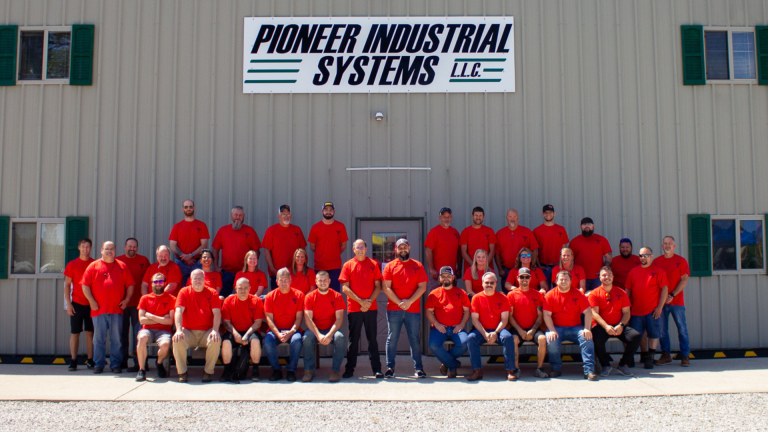How to Pitch the Benefits of
Industrial Automation to Leadership

Industrial automation is the use of technology and machines to automate industrial processes and reduce the need for human labor. This technology can include robotics, artificial intelligence, and computerized systems. The benefits of industrial automation are numerous, including increased efficiency, improved quality control, and enhanced workplace safety. However, convincing leadership to invest in automation can be a challenging task.
In this blog post, we will provide you with actionable tips on how to pitch the benefits of industrial automation to your organization’s top management. We will discuss how to identify pain points that automation can solve, highlight the ROI of automation, show the competitive advantage of automation, emphasize the safety benefits of automation, and address concerns that leadership may have about implementing automation. With the right approach and strategy, you can effectively communicate the value of automation to top management and help your organization stay ahead of the competition.
The five points to successfully pitch automation to your leadership:
Identify pain points
Highlight ROI
Show the competitive advantage
Emphasize the safety benefits
Address concerns
Identify the pain points

The first step in pitching the benefits of industrial automation to leadership is to identify the pain points that automation can solve. These pain points may include labor shortages, rising labor costs, quality control issues, or safety concerns. By highlighting these pain points, you can demonstrate the significant impact automation can have on the organization’s bottom line. For example, if your organization is experiencing labor shortages, automation can provide a solution by reducing the need for human labor and increasing productivity. If your organization is struggling with quality control, automation can provide a more accurate and consistent way of producing goods and services. By identifying the pain points and demonstrating how automation can solve them, you can make a compelling case for investment in industrial automation.
Highlight ROI

Industrial automation can provide a significant return on investment (ROI) for organizations that invest in it. To pitch the benefits of industrial automation to leadership, it’s essential to highlight the ROI of automation. Calculating the ROI involves determining the costs associated with implementing automation, such as equipment, software, and training, and comparing them to the savings that automation will provide in terms of increased productivity, reduced labor costs, and improved product quality. By demonstrating a positive ROI, you can provide compelling evidence for the value of industrial automation. Additionally, sharing success stories of other organizations that have implemented automation and seen a positive ROI can help build a strong case for investment.
Show the competitive advantage

Another critical point to pitch the benefits of industrial automation to leadership is to demonstrate how automation can provide a competitive advantage. By automating industrial processes, organizations can increase productivity, reduce costs, and improve product quality. This, in turn, can lead to increased customer satisfaction and loyalty. By highlighting the competitive advantage of automation, you can show leadership how investing in automation can help the organization stay ahead of the competition. Sharing case studies and success stories of other organizations that have implemented automation to gain a competitive advantage can be a powerful way to make your case. Additionally, it’s essential to emphasize that automation is becoming increasingly common in many industries, and failing to invest in automation can leave the organization falling behind its competitors.
Emphasize the safety benefits

Safety is a top priority in any organization, and industrial automation can significantly improve workplace safety. By automating hazardous or repetitive tasks, organizations can reduce the risk of workplace accidents and injuries, leading to a safer and more secure work environment. Additionally, automation can provide real-time monitoring and alerts, allowing organizations to quickly address any potential safety hazards before they become more significant issues. Emphasizing the safety benefits of automation can be a powerful way to pitch the benefits of industrial automation to leadership, as it demonstrates the organization’s commitment to creating a safe and secure work environment for its employees. Sharing statistics on workplace accidents and injuries and how automation can reduce those numbers can also help make a strong case for investment in industrial automation.
Address concerns

Despite the numerous benefits of industrial automation, many organizations are hesitant to invest in it due to various concerns. These concerns can include the perceived high cost of implementation, fear of job loss, and complexity of the technology. However, these concerns can be addressed to gain leadership buy-in and unlock the potential of automation.
One common concern is the cost of implementation. While it’s true that implementing automation can require a significant upfront investment, it’s essential to consider the long-term benefits. Organizations can calculate the return on investment (ROI) to justify the cost of automation. This calculation involves assessing the potential cost savings and increased productivity that automation can provide. By demonstrating the ROI, organizations can make a compelling case for investment in automation.
Another concern is the fear of job loss. Some may fear that automation will lead to job loss and unemployment. However, automation can create new job opportunities in areas such as maintenance, programming, and supervision. Organizations can also consider reskilling or upskilling employees to work alongside automated systems. By showing employees that automation can lead to new opportunities rather than job loss, organizations can help alleviate their concerns.
Finally, the complexity of automation can be a concern for some organizations. Automation can seem complex and difficult to implement, which can discourage some organizations. However, partnering with an experienced automation provider can simplify the process and ensure successful implementation. Automation providers can provide a detailed analysis of the potential benefits of automation and demonstrate how the technology can simplify manufacturing processes. With the right partner, organizations can successfully implement automation without the complexities they may fear.

In conclusion, industrial automation is a game-changer for businesses looking to remain competitive and streamline their manufacturing processes. By implementing automation, businesses can increase productivity, reduce costs, improve workplace safety, and gain a competitive edge. However, convincing leadership to invest in automation can be a challenging task, but by identifying pain points, highlighting the ROI, emphasizing safety benefits, and showing how automation can provide a competitive advantage, you can make a compelling case.
It’s important to address concerns such as cost, job loss, and complexity, but with the right solutions in place, these concerns can be mitigated. Partnering with an experienced automation provider can help simplify the process and ensure successful implementation.
In today’s fast-paced business landscape, industrial automation is no longer a luxury but a necessity. As an industry expert, it’s your responsibility to pitch the benefits of automation to leadership and encourage them to make this crucial investment. By doing so, you’ll not only improve the efficiency of your manufacturing processes but also increase the profitability and sustainability of your business in the long run.
If you’re serious about integrating automation into your manufacturing and would like some guidance, fill out the form below to receive a FREE consultation from our team!




